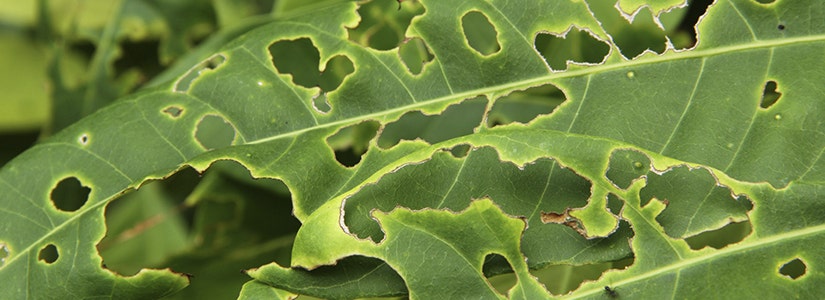

- Home
- Solution Center
- Learn
- Outdoor Pests
- Lawn Grubs: A Threat To Your Grass
Lawn Grubs: A Threat To Your Grass
What are Grub Worms
Lawn Grubs, often called White Grubs, are the immature form of different Scarab Beetles, such as Japanese Beetles, June "bugs" (beetles) or the European Chafers. These white, C-shaped creatures have soft bodies with legs near the head. They feed on grass roots (and organic matter in the soil), causing sections of grass in the lawn to die. A white grub eventually turns into adult Beetles and emerge from soil to mate and lay eggs.

Most Scarab Beetles have a one-year life cycle; June Beetles have a three-year cycle. Timing varies by Beetle species and region, but generally adults emerge from soil, mate, and lay eggs over the course of two to three weeks in early to midsummer.
Depending on soil moisture and temperature, eggs hatch about two weeks after being laid, in mid-to late summer. The new generation of root-munching pests begins feasting immediately after hatching. Peak feeding occurs in early fall. Typically, the pests operate a few inches below the soil surface, but burrow deeper (up to 8 inches in northernmost areas) before winter arrives.
Symptoms of Grub Feeding

As your lawn greens up in spring, keep an eye out for brown patches that never turn green. Those dead patches may be due to Grub feeding that occurred the previous fall.
What do grubs eat?
Grubs feed on grass roots and organic soil matter that causes sections of lawn grass to die. To check if grubs are to blame for your dead patches, lift a piece of your turf. If Grubs are the culprit, the dead patch will roll up like a carpet, or you'll be able to pull up the grass and see that it has no roots.
Irregularly-shaped dead patches appear in your well-irrigated lawn in late summer or early fall. Check your turf using the technique just mentioned.
Grub damage to lawn is also caused by birds, skunks, armadillos, raccoons or moles are tearing up your lawn —they eat Grubs and are trying to uncover them. These animals also dig and eat Earthworms, so confirm Grubs are present before pursuing any treatment.
Your turf has become spongy. Sometimes you can detect sponginess before extensive brown patches appear. With well-watered lawns, sponginess may be the first clue that Grubs are present.
Some Are Okay
Inspect your lawn to confirm pests are present and determine the extent of the infestation. A healthy lawn can easily support a population of zero to five Grubs —and possibly as many as nine per square foot.
Scout a lawn in late summer by digging several sections of sod 1 foot square and 2 to 4 inches deep. If they are present and feeding, you'll see them in soil. Follow these treatment guidelines based on the number of pests present:
- 0-5: No need to treat.
- 6-9: No need to treat a healthy lawn –unless animals are digging to feed on them. In a large yard, you may want to treat highly visible, used areas, but not treat the "back 40" section. A stressed, less healthy lawn will likely require treatment.
- 10 or more: This many will likely create visible damage to a lawn. Plan to treat.
While turf is lifted, grab any of the white monsters you see and toss them into a can of sudsy water. Water turf after replacing it.
Treatment: Timing Is Key
Immature Grubs are most susceptible to pesticides while young. For most this means applying pesticides while newly hatched are feeding —in mid-to late summer and early fall.
A curative product kills existing the pests on contact. A preventative pesticide kills them over a longer period of time –those that are present at the time of treatment, as well as those that hatch during the season of application. Because the preventative contains nitrogen fertilizer, it's important to keep lawns irrigated after application to avoid burning grass in summer heat.
Helpful Tips to Prevent Grubs in Your Lawn
- Water in pesticides after application. Watering moves the pesticide down toward soil and also encourages moisture-loving Grubs to move upward.
- Keep an eye on nearby lawns. If a neighbor has a lawn Grub problem, emerging Beetles will likely migrate toward your grass.
- They love moisture; populations peak in soil that's consistently moist. (More female beetles lay eggs in well-maintained turf, and the eggs that hatch develop better in such turf than they do in dry, stressed turf.) Droughty summers slow pest activity and can even disrupt egg hatching.
- Repair dead lawn patches by reseeding.














